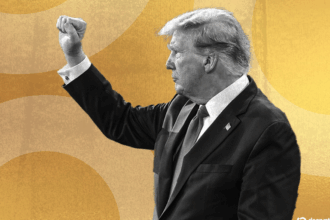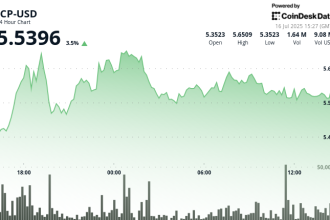This is a segment from the Forward Guidance newsletter.
As with economic data these days, the devil is in the details.
The Jobs Report: Toptop Looks Good
The latest jobs report delivered positive headline numbers:
- Non-farm payrolls increased by 147,000, exceeding expectations of 100,000.
- The national unemployment rate dipped to 4.1%, better than anticipated forecasts of 4.3%. This is significantly stronger than the Federal Open Market Committee’s (FOMC) projections from June.
The improved 4.1% unemployment rate substantially lowers the possibility of imminent Federal Reserve interest rate cuts.
Topline Strength Masked By Labor Force Decline
A key factor driving the strong topline data is a decreasing labor force, driven by drastically lower immigration levels since the start of the Trump administration.
This is evident when examining land border crossings, which have plummeted.
This stands in contrast to the situation one year ago:
- This specific dynamic triggered a “false-positive” signal from the Sahm rule, precipitating a rapid 50 basis point interest rate cut by the Fed last year.
In essence, the labor market dynamics mirroring the artificial weakness caused by high immigration in September now produce an artificial strength, obscuring underlying conditions.
Private Sector Performance Questionable
Despite the positive headlines, a closer examination reveals potential cracks:
- Private payrolls increased by 74,000 – notably below forecasted expectations of 105,000.
The majority of the positive surprise stemmed from government payroll gains, which surged to 73,000 (up from 7,000 in the preceding month).
Sector-specific analysis shows notable cooling:
Workforce growth slowed significantly within the health care and education services sector, a primary engine of job creation in recent years. This slowdown is highlighted as a concern.
The Human Cost Remains
The apparent bolstering of the labor market exerts a harsh toll on job seekers:
- Continuing jobless claims persistently climb, reflecting persistent challenges for unemployed individuals finding new positions within the current environment.
The economy’s resilience, characterized by an absence of widespread layoffs so far, keeps the Fed’s policy options front-loaded but dependent on unfolding inflation data.
Conclusion: Nuance Over Indicators
The disparity between the robust headlines and potentially more modest underlying conditions means the labor market does not evoke an immediate policy response from the Federal Reserve.
Consequently, an environment of cautious policy observation seems to be setting in.












